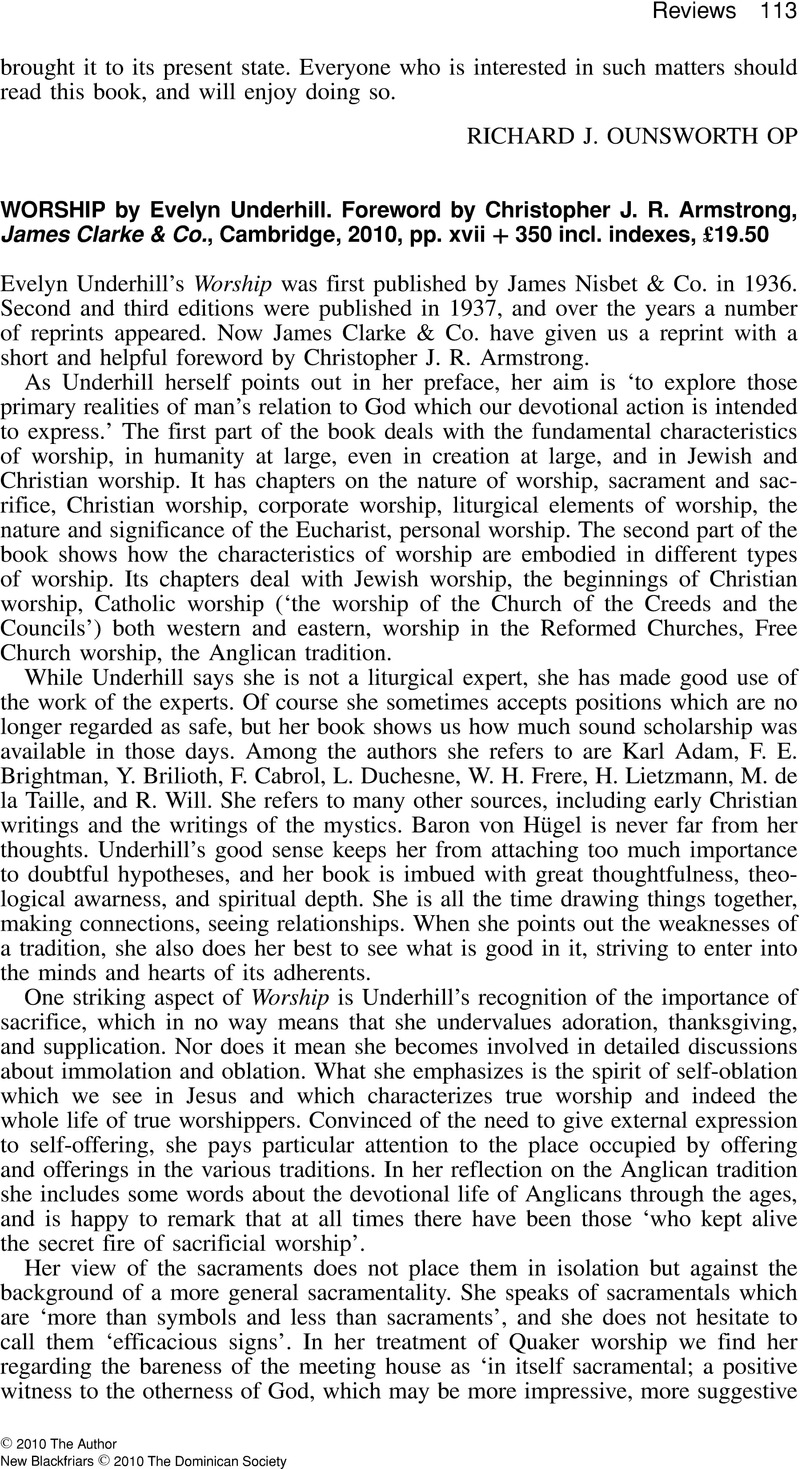No CrossRef data available.
Article contents
Worship by Evelyn Underhill. Foreword by Christopher J. R. Armstrong, James Clarke & Co., Cambridge, 2010, pp. xvii + 350 incl. indexes, £19.50
Review products
Worship by Evelyn Underhill. Foreword by Christopher J. R. Armstrong, James Clarke & Co., Cambridge, 2010, pp. xvii + 350 incl. indexes, £19.50
Published online by Cambridge University Press: 01 January 2024
Abstract
An abstract is not available for this content so a preview has been provided. Please use the Get access link above for information on how to access this content.

- Type
- Reviews
- Information
- Copyright
- Copyright © 2010 The Author. New Blackfriars © 2010 The Dominican Society.


